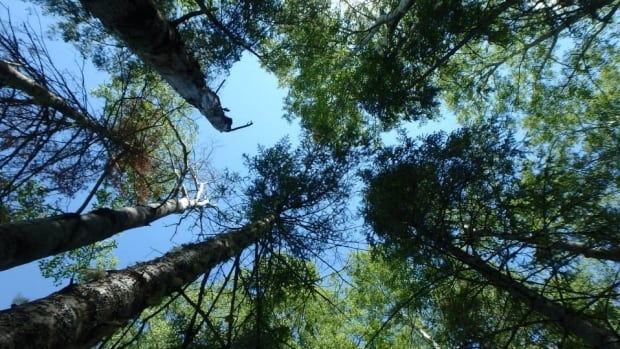
Canada's great expanse of boreal forest is changing due to climate change. But not all hope is lost
CBC
CBC Alberta and Saskatchewan have teamed up for a new pilot series on weather and climate change on the Prairies. Meteorologist Christy Climenhaga will bring her expert voice to the conversation to help explain weather phenomena and climate change and how it impacts everyday life.
It's the world's largest forest of least disturbance. A stretch of trees sweeping around the globe, accounting for a third of the Earth's forested area.
We're talking about the boreal forest. The planet's coldest forest – a massive store for carbon accumulated over thousands of years and a thriving ecosystem for plants and animals.
In Canada, over 300 million hectares of boreal forest stretches from Yukon all the way through the northern half of the provinces, east towards Newfoundland. The boreal forest is home to half the nation's species of birds, and 3.7 million people.
As our climate changes, this great expanse of cold forest is getting warmer. Average temperatures across the Prairies are 1.9C warmer since the mid-20th century, according to Environment and Climate Change Canada.
Winters are getting shorter and milder overall. Summers are getting hotter with not enough moisture to compensate for the heat. Though some of these changes may seem small, they have big impacts on our local ecosystems, including the boreal forest.
So what will happen to this beacon of Canadian wilderness as our climate continues to change? Will it survive?
Scientists say we are already seeing a shift.
Change is nothing new for the boreal forest. It is under constant pressure from natural disturbances – things like fire and insects – that can help the forest renew itself and become more resilient.
But what happens when these disturbances happen more often, when they start to become the new normal?
That's the lens we are looking through as we continue to see our climate changing at a rapid rate.
"If we think about drought, fire, insects and disease, this large tract is contending with all of these threats all the time. But under climate change at least some of these threats are going to become more severe," says Janice Cooke, a professor of biological sciences at the University of Alberta.
When the mercury climbs, evaporation happens more readily and plants lose water at a high rate through transpiration. When it is not replaced, we start to get into moisture deficits. And the longer those deficits last, the more stress they put on our plants.
"When trees are faced with a lack of water, it's pretty serious. They close their pores on their leaves and they try to hold out," says Cooke.













